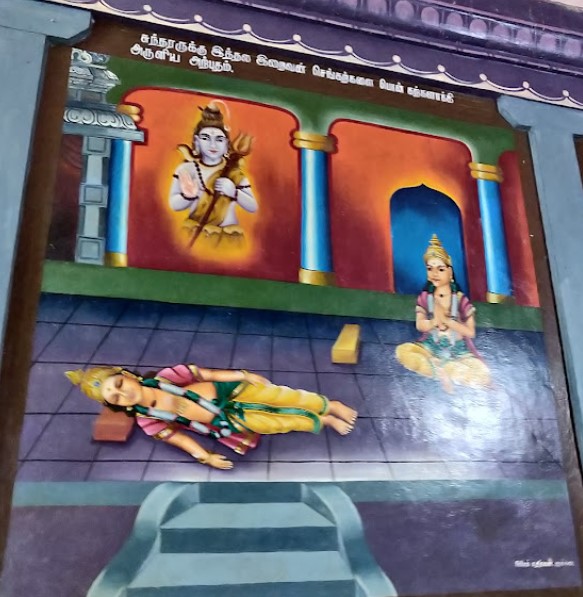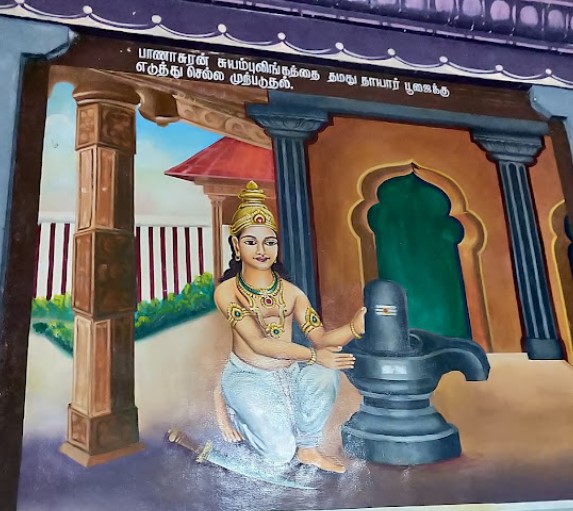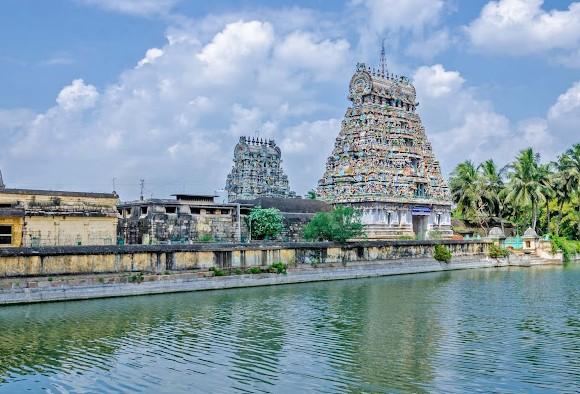

- This temple is one of the 276 Devara Paadal Petra Shiva Sthalams and is the 76th Shiva Sthalam located on the southern bank of the river Cauvery in Chozha Nadu (Thenkarai).
- Here, Lord Shiva is worshipped as a Swayambumurthi, a self-manifested form.
- This is the 193rd Thevaram Paadal Petra Shiva Sthalam and 76th sthalam on the south side of river Kaveri of Chozha Nadu.
- This temple is inside the Thirupugalur Sri Agnipureeswarar temple.
- This is one of the 44 temples on which moovar has sung hymns on Lord Shiva of this temple. Thirunavukkarasu Swamigal has attained mukthi in this place.
- This Thirupugalur is also the birth place of Muruga Nayanar, one of 63 Nayanmars. This is the Sathayam nakshatra temple.
- Saint Thirunavukkarasar, also known as Appar, attained salvation (“Mukthi”) in this sacred place and sang his last pathigam here.
- This temple is one of the 44 Paadal Petra Sthalams where the three revered saints-Saint Thirugnanasambanthar, Saint Thirunavukarasar (Appar), and Saint Sundaramurthy (Sundarar)-composed their pathigams.
- Notably, this temple is also the birthplace of Saint Muruga Nayanar, one of the 63 Nayanmars. Architecturally, it features two corridors, and the main tower, or Rajagopuram, boasts five tiers.
- Visiting this temple is considered particularly auspicious for those born under the “Sadhayam” nakshatram (star). The most recent consecration ceremony, or Maha Kumbabishekam, took place on March 27, 2003.
PURANIC SIGNIFICANCE 1:
- The Thiru Pukalur Vardhamanecharam temple is located within the complex of the Thiru Pukalur temple, which is another significant Devara Paadal Petra Sthalam dedicated to Lord Agneeswarar.
- The main deity of this temple is Shri Vardhamaneswarar, whose shrine is situated adjacent to the sanctum of Lord Agneeswarar.
- Historically, this area has been known by several names, including Punnagavanam, Saranyapuram, and Rakthaaranyam.
- The three revered saints, known as the Moovars, have composed a total of nine pathigams here: eight pertaining to Thiru Pukalur and one specifically about this temple, which was rendered by Saint Thirugnanasambanthar.
- The name "Pukalur" is derived from the belief that this place served as a refuge for the devas and sages when they were tormented by demons, with "pukal" meaning asylum and "oor" meaning village in Tamil.
PURANIC SIGNIFICANCE 2:
- This temple is the birthplace of Muruga Nayanar, one of the revered 63 Nayanmars. He dedicated himself to serving in this temple by offering flowers three times a day. In his hymns, Saint Thirugnanasambandar extols Muruga Nayanar’s devotion to the Lord. It is said that Muruga Nayanar attained salvation at Nallur Perumanam (Aachalpuram) during the wedding of Saint Thirugnanasambandar.
- The temple has been a significant site of worship for many revered figures, including Lord Agni, Sage Bharadwaj, King Nalan, all 18 Siddhars, and the saints Thirugnanasambanthar, Appar, and Sundarar, who have all offered their prayers to Lord Shiva here.
PURANIC SIGNIFICANCE 3:
- Thirupugalur is the birthplace of Muruga Nayanar, one of the 63 Nayanmars, who dedicated his service to the temple by offering flowers. Thirugnanasambandar praises Muruga Nayanar’s devotion in his hymns. It is believed that Muruga Nayanar attained mukti alongside Thirugnanasambandar at Thirunallur Perumanam.
- On the Chitra Sathayam thithi, Thirunavukkarasar is said to have attained mukti in this sacred place, leading to the celebration of a ten-day festival in his honor.
Thirupugalur is also recognized as one of the seven Lord Shiva temples known as Paadal Petra Sthalams, all of which end with "Charam." These temples include:
- Thiru Mundeecharam
- Thiru Patteeswaram
- Thiru Naraiyur Siddheecharam
- Thiru Kondeecharam
- Thiru Pugalur Vardhamaneecharam
- Thiru Ramadeecharam
- Thiru Ketheecharam
This rich spiritual heritage highlights the significance of Thirupugalur in the context of Tamil Saivite tradition.
ADMINISTRATION:
Currently, this temple is managed by the Velakurichi Adheenam (Thiruppugalur) and the HR&CE (Hindu Religious and Charitable Endowments) department.


